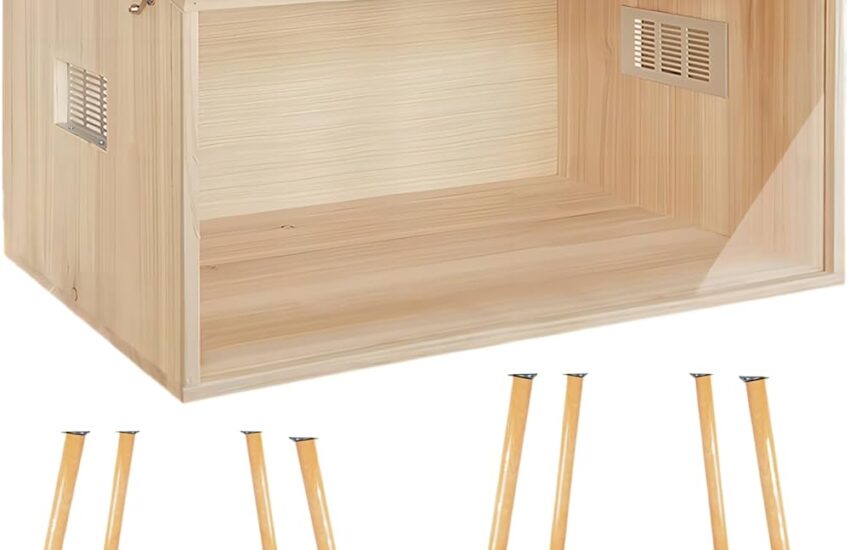Hamster Enclosure Ventilation Tips
Proper ventilation is one of the most crucial aspects of setting up a comfortable and healthy environment for your hamster. This guide will provide you with essential tips on how to improve airflow in your hamster’s enclosure, ensuring your furry friend remains happy and healthy.
Understanding Ventilation Needs
Every pet owner should recognize that good **ventilation** is vital for their pet’s health. Hamsters are particularly sensitive to their surroundings, and stale air can lead to respiratory issues and increased humidity levels, which might result in mold growth or bacteria. Ideally, hamster enclosures should allow for constant airflow while being safe and secure. Adequate ventilation helps to disperse heat, allowing your pet to thrive in a comfortable environment.
Signs of Poor Ventilation
Before we discuss tips for improving **ventilation** in your hamster’s cage, it’s essential to identify signs of inadequate airflow. If you notice that your hamster is frequently lethargic, loses interest in activities, or has a persistent odor emanating from the enclosure, these could be indicators of poor ventilation. In such scenarios, it’s crucial to reassess the setup. Stagnant air not only impacts your pet’s health but also contributes to an unpleasant environment for you.
Benefits of Proper Enclosure Ventilation
Ensuring that your hamster’s enclosure has **adequate ventilation** can promote better overall health. Fresh air circulation helps in reducing the risk of respiratory infections and promotes a more pleasant living space. Moreover, proper confinement can reduce stress levels in hamsters, contributing to an active lifestyle. A well-ventilated habitat can also minimize mold growth on food or bedding, ensuring a safer environment.
Tips for Enhancing Ventilation
Here are some practical steps to optimize ventilation in your hamster’s cage:
Choosing the Right Enclosure Design
The design of your hamster’s enclosure can significantly impact the airflow. Opting for a cage with **wire mesh** sides or a reduced acrylic design can improve **air circulation**. This design allows air to flow freely around the enclosure. While glass tanks may look aesthetically pleasing, they can trap heat and moisture, leading to poor air quality. In contrast, a more open **wire-cage system** is ideal.

Regular Cleaning and Maintenance
Keeping your hamster’s space clean is vital for good **ventilation**. Uneaten food and soiled bedding can trap moisture and odors, leading to airflow problems. Scheduling a regular cleaning routine — ideally once a week — ensures your hamster cage remains tidy, helping to maintain fresh air circulation. As a bonus, it also allows you to check on your hamster’s health more frequently.
Adding Ventilation Accessories
Several accessories can help improve the **ventilation** in your hamster’s habitat. Products like small fans (designed for pet enclosures) can help improve airflow without startling your pet. Additionally, consider placing **natural air purifiers** like plants outside the hamster’s cage, which can enhance the overall air quality of the room. Always ensure that any accessories used do not pose a risk to your hamster’s safety.
Monitoring Air Quality
Keeping track of the air quality in your hamster’s habitat is a vital aspect of responsible pet care. Adequate ventilation literally translates to better health in pets.
Using Air Quality Meters
Investing in an **air quality meter** can provide you insights into the **humidity** and temperature of the enclosure. Hamsters thrive in low humidity (around 40-60%) and moderate temperatures (around 68-72°F). Regular monitoring helps you make adjustments to keep the environment comfortable and healthy for your pet.
Seasonal Adjustments
As seasons change, **ventilation** needs may fluctuate. During summer, ensuring sufficient air circulation is crucial to prevent overheating. Conversely, in winter, you might need to close off some ventilation to keep your hamster cozy and warm. Observing your hamster and adjusting the enclosure according to temperature changes is key for their health.
Conclusion
Ensuring that your hamster’s enclosure is well-ventilated creates a safer and healthier environment for your pet. By investing time and effort into understanding and improving airflow, you can avoid potential health risks and provide a more pleasant habitat. Assess your enclosure, maintain cleanliness, make thoughtful choices about design, and actively monitor the environment to ensure your furry friend thrives.
Key Takeaways
- Good ventilation is important for your hamster’s health and well-being.
- Regular cleaning prevents odors and mold, promoting better airflow.
- Choose enclosure designs that allow for maximum air circulation.
- Temperature and humidity should be monitored regularly for optimal conditions.
- Adjust ventilation needs with the changing seasons.
FAQ
1. How can I tell if my hamster’s enclosure is well-ventilated?
Look for signs of **productivity** in your hamster. Healthy activity levels, absence of persistent odors, and no signs of respiratory distress indicate that your enclosure likely has adequate ventilation. Additionally, checking if air readily circulates within the cage—as evident by temperature management—can help evaluate ventilation quality.
2. Can poor ventilation cause health issues in hamsters?
Yes, poor ventilation can lead to serious health problems in hamsters, including respiratory infections due to stale air and rising humidity levels. Monitoring the enclosure’s condition is critical in preventing such risks.
3. What modifications can I make to improve my hamster’s air quality?
Consider transitioning to a wire or mesh enclosure if you have a glass tank. You can also introduce small circulation fans or considering spacing bedding strategically to enhance airflow can also make a difference in air quality.
4. How often should I clean my hamster’s enclosure for optimal ventilation?
A maintaining a regular cleaning schedule every week is recommended. This helps in removing waste and uneaten food that may contribute to poor air quality and humidity, allowing much better **ventilation**.
5. Are there any specific plants that can help purify the air around a hamster’s enclosure?
While many plants can contribute to better air quality, ensure they are non-toxic to hamsters. Some suitable options are spider plants and bamboo; just place them near, but out of reach of, the enclosure to allow greater airflow.
